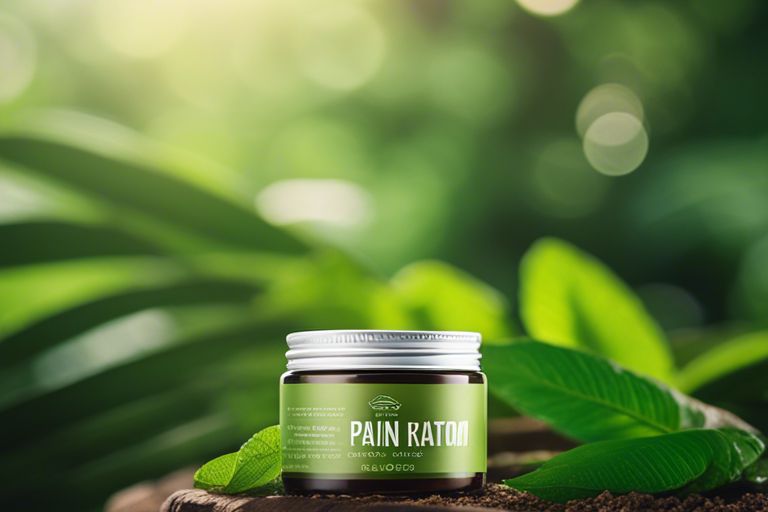Deprecated: mb_convert_encoding(): Handling HTML entities via mbstring is deprecated; use htmlspecialchars, htmlentities, or mb_encode_numericentity/mb_decode_numericentity instead in /home/users/kratomfiles/www/kratomfiles.com/wp-content/plugins/quick-adsense-reloaded/includes/template-functions.php on line 3552
Kratom, a natural herb derived from the leaves of the Mitragyna speciosa tree, has gained significant attention in recent years. However, along with its rising popularity, a number of myths and misconceptions have emerged surrounding this plant. It is crucial to debunk these misconceptions and separate fact from fiction. From its legal status to its potential addictive properties, from its alleged hallucinogenic effects to the real dangers associated with its use, there is much to be explored and understood about kratom. In this discussion, we will delve into the various aspects of kratom, addressing common myths and misconceptions, and shedding light on the truth behind this intriguing herb.
Key Takeaways
- Kratom’s legal status varies across states and countries, and the FDA has expressed concerns about its safety and potential risks.
- Kratom can be addictive if misused or abused, but responsible use and moderation can minimize the risk of addiction.
- Kratom’s effects are often compared to caffeine or a low dose of opioids, and there are different varieties with unique effects.
- Kratom has potential medicinal benefits, including pain relief and possibly helping with opioid withdrawal, but more research is needed to understand its properties fully.
Kratom’s Legal Status: Clearing up the Confusion

best brands of kratom
Kratom’s legal status in the United States is subject to variation across different states, making it essential to stay informed about the specific laws in your area. While kratom is legal in most states, there are a few exceptions where it is either fully or partially banned. Understanding the legal landscape surrounding kratom is crucial to avoid any legal complications.
One common myth surrounding kratom is that it is a federally controlled substance. However, this is not the case. The Drug Enforcement Administration (DEA) has considered classifying kratom as a Schedule I substance in the past, but these efforts were met with significant opposition from advocates and the public. As of now, kratom remains legal at the federal level.
Another misconception is that kratom is universally banned in every state. While it is true that some states have imposed restrictions on kratom, such as labeling requirements or age restrictions, many states have chosen to keep it legal. However, it is important to note that the legal status of kratom can change, so it is crucial to stay updated on any legislative changes in your area.
Furthermore, the legality of kratom also varies by country and region. For example, kratom is illegal in certain countries, including Australia, Denmark, and Malaysia. Therefore, it is vital to research the laws in your specific country or region if you are planning to travel with or consume kratom.
Breaking the Myth: Kratom’s Addictive Properties
Breaking the myth surrounding kratom’s addictive properties, it is important to understand the potential for addiction with responsible use and moderation. While kratom does possess addictive properties, the risk of addiction is relatively low when used responsibly. Here are three key facts to consider when debunking misconceptions about kratom’s addictive properties:
- Responsible Use and Moderation: Like many substances, kratom can be addictive if misused or abused. However, when used responsibly and in moderation, the risk of addiction is significantly minimized. It is crucial to follow proper dosage guidelines and avoid excessive or prolonged use to mitigate the potential for dependence.
- Seeking Professional Advice: If you have concerns about kratom addiction or are using kratom as a natural alternative to managing pain or other conditions, it is advisable to seek professional advice. Consulting with a healthcare provider or addiction specialist can provide valuable insights into responsible usage and help address any potential addictive tendencies.
- Understanding the Addictive Potential: Educating oneself about the addictive potential of kratom is essential for informed use. By understanding how kratom interacts with the body and brain, users can make informed decisions regarding dosage, frequency, and duration of use to minimize the risk of dependence.
Understanding Kratom’s Effects: Debunking Hallucination Claims

To further explore the effects of kratom and dispel misconceptions, it is important to address claims regarding hallucinations and provide a clear understanding of the substance’s psychoactive properties. One common myth about kratom is that it causes hallucinations. However, this claim is not supported by evidence.
Kratom contains mild psychoactive alkaloids, which can have an impact on the brain and body. However, these effects are not the same as hallucinations. Users commonly report feelings of relaxation, focus, and mild euphoria when taking kratom. These effects are often described as similar to the effects of caffeine or a low dose of opioids.
To further clarify the effects of kratom, it is helpful to differentiate it from hallucinogens. Hallucinogens, such as LSD or psilocybin mushrooms, are known for causing profound alterations in perception, including vivid visual and auditory hallucinations. Kratom, on the other hand, does not produce these types of hallucinatory experiences.
It is crucial to debunk the myth that kratom is a hallucinogen for responsible use. Understanding the actual effects of kratom can help users make informed decisions about its use and avoid misconceptions. It is also important to note that, like any substance, kratom may have potential benefits and side effects. Consulting with a healthcare professional and using kratom responsibly is essential for those seeking natural alternatives to prescription medications, particularly for pain relief.
To summarize, kratom does not cause hallucinations despite containing mild psychoactive alkaloids. Users commonly experience relaxation and focus when taking kratom, not hallucinations. Differentiating kratom from hallucinogens is crucial for responsible use, and understanding its effects can help users make informed decisions about its potential benefits and side effects.
Separating Fact From Fiction: The Real Dangers of Kratom
When considering the real dangers of kratom, it is important to acknowledge the potential health risks associated with its use. While kratom can provide pain relief and other benefits when used responsibly, there is a risk of addiction if it is not used in moderation. Additionally, there are regulatory concerns surrounding kratom, as its legal status varies from state to state. Understanding these potential dangers can help individuals make informed decisions about their kratom use.
Health Risks of Kratom
Kratom poses potential health risks that should not be overlooked, as it can lead to addiction and rare instances of severe issues such as liver damage. While there are many myths and misconceptions surrounding kratom use, it is important to separate fact from fiction when considering its potential health risks. Here are three key points to consider:
- Addiction potential: Kratom is known to be addictive, with users experiencing withdrawal symptoms when they stop using it. This highlights the importance of using kratom responsibly and in moderation.
- Rare cases of severe issues: Although rare, there have been reported cases of liver damage associated with kratom use. It is crucial to be aware of this potential risk and consult a healthcare professional if any concerning symptoms arise.
- FDA concerns: The U.S. Food and Drug Administration (FDA) has issued warnings about the use of kratom products, citing concerns over its potential for abuse and addiction. It is essential to stay informed about the latest regulatory guidelines and advisories regarding kratom use.
Potential for Addiction
The potential for addiction is an important aspect to consider when examining the real dangers of kratom, as it poses a risk of dependence with prolonged high-dose usage. However, it is crucial to separate the facts from the myths about kratom’s addictive potential. While kratom can be addictive, the misconception that it is completely addictive, like opioids, needs to be addressed. The addiction potential of kratom is generally considered lower than opioids, but it is not without risks. Responsible use and awareness of the addiction potential can help users make informed choices. It is recommended that individuals with addiction concerns seek professional guidance to ensure their safety and well-being. By providing accurate information, we can debunk myths and promote a better understanding of kratom’s potential for addiction.
| Myth | Fact |
|---|---|
| Kratom is completely addictive, like opioids | The addiction potential of kratom is generally considered lower than opioids. |
| Kratom is not addictive at all | Kratom can be addictive with prolonged high-dose usage |
| Kratom addiction is harmless | Kratom addiction poses risks and should be taken seriously |
| Kratom is a safe alternative to opioids | While it may have potential benefits, responsible use is crucial to minimize the risk of dependency. |
Regulatory Concerns Surrounding Kratom
Regulatory concerns surrounding the use of kratom have become a topic of discussion due to its potential for dependence and varying legal status. Here are the key facts about the regulatory concerns surrounding kratom:
- Legal Status: Kratom is legal at the federal level in the United States, but some states have banned its use. The legality of kratom also varies by country and region.
- FDA Concerns: The Food and Drug Administration (FDA) has expressed concerns about the safety and potential risks associated with kratom. They have issued warnings about the potential for dependence and the presence of contaminants in some kratom products.
- Misconceptions: There are misconceptions about kratom being a completely safe and natural substance. While it is derived from a plant, kratom is not entirely free of risks or side effects. It is important to understand the potential risks and use it responsibly.
It is essential to stay informed about the regulatory landscape surrounding kratom and ensure responsible use to minimize potential risks.
Kratom Varieties: Exploring the Diversity of Strains
Kratom offers a wide range of varieties, each with its own unique effects and potencies. These strains are categorized based on the color of the vein in the leaf, with red, green, and white veins being the most common. The balance between stimulating and sedative effects can also vary among different strains. Additionally, the region of origin plays a role in determining the characteristics of each strain. By understanding the diversity of kratom strains, users can choose the ones that best suit their desired effects and preferences.
Popular Kratom Strains
Exploring the diverse array of kratom strains reveals a range of unique effects and potencies based on the color of the vein in the leaf and the regional origin of each strain. Here are some popular kratom strains:
- Red Vein: Known for its relaxing and pain-relieving properties, red vein kratom is often used for stress relief and promoting a sense of calmness. It is commonly regarded as the most sedating strain.
- Green Vein: Green vein kratom is known for its balanced effects, providing both mild stimulation and relaxation. It is often used to enhance mood, increase focus, and promote well-being.
- White Vein: White vein kratom is typically associated with stimulating effects, providing increased energy and mental clarity. It is often used as a natural alternative to caffeine or for promoting motivation and productivity.
Understanding the characteristics and effects of different kratom strains can help users choose the most suitable option based on their desired outcomes. By dispelling common myths and misconceptions surrounding kratom, individuals can make informed decisions about its use and maximize the unique effects offered by this natural product derived from the Mitragyna speciosa tree.
Effects of Different Strains
The diverse array of kratom strains, characterized by the color of the vein in the leaf and the region of origin, offers users a wide range of effects and potencies to choose from, allowing them to tailor their kratom experience based on their desired outcomes. Understanding the effects of different strains is essential for individuals to find the right strain that suits their individual needs. To paint a clearer picture, here is a table outlining the effects of common kratom strains:
| Kratom Strain | Effects |
|---|---|
| Red Vein | Relaxation, pain relief, sedation |
| Green Vein | Energy, focus, mood enhancement |
| White Vein | Stimulation, mental clarity, productivity |
It’s important to note that the effects of kratom can vary among individuals, and finding the right strain may require some experimentation. Researching the different strains and consulting with experienced users can help individuals make informed choices and enhance their overall kratom experience. By debunking common myths and misconceptions, users can better understand the effects of different strains and make informed decisions.
Kratom’s Natural Origins: Dispelling Synthetic Drug Misconceptions

Kratom, derived from the leaves of the Mitragyna speciosa tree, is a natural substance that dispels misconceptions surrounding its origins as a synthetic drug. Here are three key points to consider when discussing kratom’s natural origins:
- Native to Southeast Asia: Kratom is native to countries in Southeast Asia, including Indonesia, Malaysia, Thailand, and Papua New Guinea. The indigenous populations have used it for hundreds of years for its various medicinal properties. This fact highlights the natural and traditional use of kratom by people in these regions.
- Cultivation and Legal Status: Kratom is primarily grown in Indonesia, where it is cultivated and sold legally in most parts of the country. However, the legality of kratom in Indonesia is complex, with regulations and restrictions in certain areas. It is essential to understand the legal status of kratom to ensure responsible use.
- Quality Control and Safety: To ensure the best quality kratom, purchasing products from reputable sources is crucial. Kratom can contain synthetic compounds if it is not sourced from reliable suppliers. Therefore, choosing pure and additive-free products is essential to avoid any potential risks associated with synthetic substances.
Understanding the natural origins of kratom helps dispel misconceptions that it is a synthetic drug. While it is important to acknowledge the potential risks and side effects associated with kratom use, when used responsibly and in moderation, kratom can be a safe and effective natural substance. By staying informed and making informed choices, individuals can use kratom in a way that maximizes its potential benefits while minimizing any potential risks.
What are the common myths and misconceptions about Kratom that beginners should be aware of?
When diving into the world of kratom, beginners should be cautious of the common myths and misconceptions surrounding this botanical supplement. In the beginner’s guide to kratom, it’s important to be aware that kratom is not a cure-all, and dosage and strains can significantly impact its effects. Seeking reliable sources for information is crucial for a safe and informed journey with kratom.
Are the Common Myths and Misconceptions about Kratom Related to Its Traditional Use?
Kratom traditional uses have sparked several myths and misconceptions. Some believe it’s only used for recreational purposes, while others think it’s addictive. In reality, kratom has been used for centuries in Southeast Asia for its medicinal and therapeutic properties, and its traditional uses are much more nuanced than commonly thought.
Is Red Kratom Effective for Anxiety, Despite Common Myths and Misconceptions?
Red kratom anxiety relief has been shown to be effective for many individuals despite common myths and misconceptions. This natural supplement can help promote relaxation and reduce feelings of anxiety, providing a potential alternative for those seeking relief. The key is to find a reputable source and use it as directed.
The Science Behind Kratom: Unveiling Current Research Efforts
As researchers continue to delve into the natural origins of kratom, they are also actively uncovering its potential medicinal benefits and understanding its impact on the body through ongoing scientific investigations. Kratom, a plant native to Southeast Asia, has gained increasing popularity in recent years, particularly as an alternative for managing opioid withdrawal and chronic pain.
One area of research focuses on the compounds found in kratom, such as mitragynine and 7-hydroxymitragynine. Scientists are studying these compounds to determine their effects on the body and their therapeutic potential. Preliminary findings suggest that these compounds may interact with opioid receptors in the brain, providing pain relief and potentially reducing withdrawal symptoms.
Ongoing research efforts also aim to better understand the addiction potential of kratom and how it compares to traditional opioids. While some users report experiencing withdrawal symptoms upon discontinuation of kratom use, the severity and duration of these symptoms are still being investigated. Additionally, researchers are exploring the safety profile of kratom, including its potential side effects and risks when used in different populations.
Another area of interest is the diversity of kratom strains and their unique properties. Various strains of kratom are available, and each may have different levels of potency and effects. Scientists are studying these strains to determine how their specific properties may offer different medicinal benefits.
It is worth noting that the legal status of kratom varies across different countries and regions. While it remains legal in some places, others have imposed restrictions or even banned its use. This legal landscape adds complexity to the research efforts surrounding kratom.
Can Kratom really be a safer and effective alternative to traditional medications?
Many people believe in kratom’s therapeutic potential as a safer and effective alternative to traditional medications. Users claim it helps with pain management, anxiety, and depression. However, more research is needed to fully understand its benefits and potential risks.
Frequently Asked Questions
Can Kratom Be Used as a Substitute for Opioids During Addiction Recovery?
Kratom’s efficacy as a substitute for opioids during addiction recovery is a topic of ongoing debate. While some individuals claim that kratom has helped them reduce their opioid dependence, there is limited scientific evidence to support its use in addiction treatment programs. Safety concerns also exist, as kratom can have addictive properties and may cause adverse effects. Furthermore, comparing the effects of kratom and opioids on the body reveals differences in potency and mechanism of action. Despite potential benefits, challenges and limitations exist in using kratom for addiction recovery, and public perception and controversies surrounding its use further complicate the issue.
What Are the Potential Long-Term Effects of Kratom Use?
The potential long-term effects of kratom use are a topic of ongoing research and debate. While some studies suggest that kratom may have potential risks, such as addiction potential and withdrawal symptoms, others argue that it can have positive effects on physical and mental health. However, there are research gaps that need to be addressed to understand the long-term implications of kratom use fully. It is important for individuals considering kratom use to weigh the potential benefits against the potential risks and consult with healthcare professionals.
Are There Any Known Interactions Between Kratom and Prescription Medications?
There is limited research on the specific interactions between kratom and prescription medications. However, it is important to note that kratom may have potential effects on liver health, especially when used in high doses or in combination with other substances. Additionally, kratom may interact with antidepressants, blood pressure medications, sedatives, anticoagulants, and anti-anxiety medications. It is recommended to consult with a healthcare professional before using kratom in conjunction with any prescription medications to ensure safety and avoid potential adverse effects.
How Does Kratom Affect the Brain and Nervous System?
Kratom’s effects on the brain and nervous system have been a topic of interest and debate. Studies suggest that kratom may interact with the brain’s opioid receptors, which can affect cognitive function and mood. It has also been found to impact neurotransmitters such as serotonin and dopamine. Some individuals use kratom to manage stress and anxiety, but there is a potential for addiction and withdrawal symptoms. Additionally, kratom’s role in pain management is still being researched.
Is Kratom Legal in All Countries?
The legality of kratom varies across countries and regions worldwide. While some countries have banned kratom due to concerns over its potential health risks, others have implemented regulations to control its use and sale. The international kratom market is influenced by these varying legal frameworks, with import and export restrictions in place in many jurisdictions. However, there are also ongoing efforts to legalize kratom in certain countries, driven by its traditional and cultural use as well as its potential therapeutic benefits.









